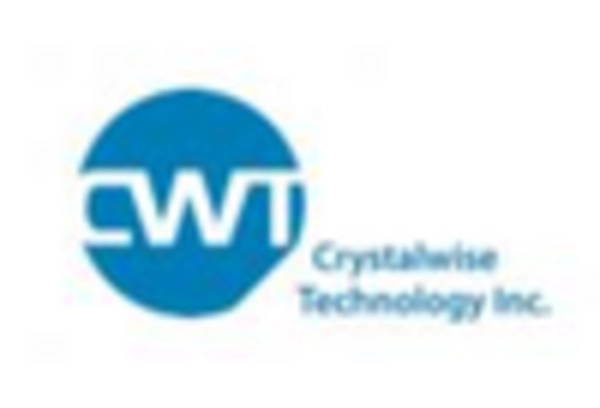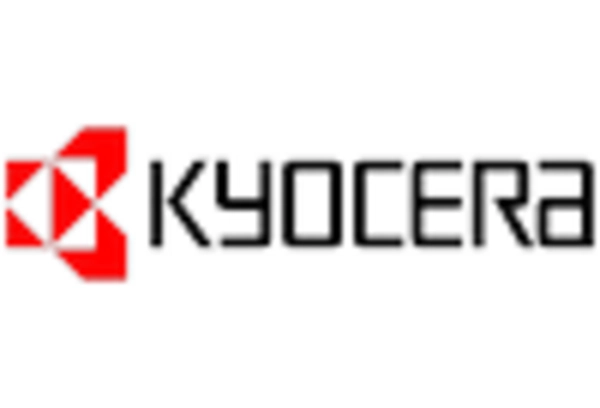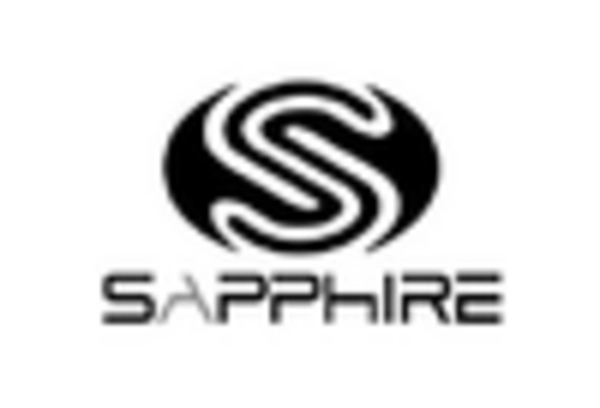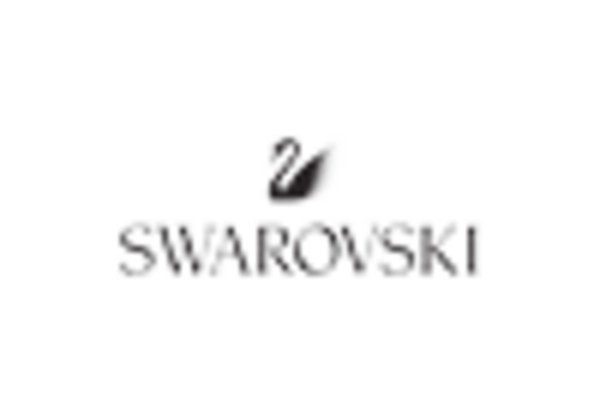Rising Demand in Electronics
The Synthetic Sapphire Market is experiencing a notable surge in demand due to the increasing utilization of synthetic sapphire in electronic devices. Sapphire's exceptional hardness and thermal stability make it an ideal material for smartphone screens, LED substrates, and other electronic components. As of 2025, the market for synthetic sapphire in electronics is projected to reach approximately 1.5 billion USD, reflecting a compound annual growth rate of around 8%. This growth is driven by the ongoing advancements in technology and the need for durable materials that can withstand the rigors of daily use. Furthermore, the trend towards miniaturization in electronics is likely to further propel the demand for synthetic sapphire, as manufacturers seek materials that offer both performance and aesthetic appeal.
Expanding Use in Medical Devices
The Synthetic Sapphire Market is expanding its footprint in the medical devices sector, where synthetic sapphire is increasingly utilized for its biocompatibility and durability. Applications include surgical instruments, endoscopes, and various diagnostic tools. The market for synthetic sapphire in medical devices is projected to reach approximately 600 million USD by 2025, driven by the growing emphasis on precision and reliability in healthcare. As medical technology advances, the demand for materials that can withstand sterilization processes while maintaining performance is likely to increase. This trend suggests that synthetic sapphire will become an integral component in the manufacturing of high-quality medical devices, thereby enhancing patient care and outcomes.
Growing Interest in Sustainable Materials
The Synthetic Sapphire Market is increasingly influenced by the growing interest in sustainable materials. As industries strive to reduce their environmental footprint, synthetic sapphire, which can be produced with lower energy consumption compared to natural alternatives, is gaining traction. The market is projected to grow by approximately 10% annually as manufacturers and consumers alike prioritize sustainability. This trend is particularly evident in the electronics and jewelry sectors, where the demand for ethically sourced and environmentally friendly materials is on the rise. The potential for synthetic sapphire to meet these sustainability criteria positions it favorably in a market that is becoming more conscious of environmental impacts.
Increased Adoption in Optical Applications
The Synthetic Sapphire Market is witnessing increased adoption in optical applications, particularly in the production of high-performance lenses and windows. Synthetic sapphire's unique optical properties, including high transparency and resistance to scratching, make it a preferred choice for various optical devices. The market for synthetic sapphire in optical applications is expected to grow significantly, with estimates suggesting a value of around 800 million USD by 2025. This growth is attributed to the rising demand for advanced optical systems in sectors such as aerospace, defense, and telecommunications. As industries continue to seek materials that enhance performance while providing durability, synthetic sapphire is likely to play a crucial role in the development of next-generation optical technologies.
Technological Innovations in Manufacturing
The Synthetic Sapphire Market is benefiting from technological innovations in manufacturing processes, which are enhancing the efficiency and cost-effectiveness of synthetic sapphire production. Advances such as the Kyropoulos method and the Czochralski process are enabling manufacturers to produce larger and higher-quality sapphire crystals. As of 2025, the market is expected to see a reduction in production costs by approximately 15%, making synthetic sapphire more accessible to various industries. This shift is likely to stimulate demand across multiple sectors, including electronics, optics, and medical devices. The ongoing research and development efforts aimed at improving production techniques may further solidify synthetic sapphire's position as a material of choice in diverse applications.

















Leave a Comment